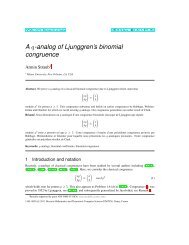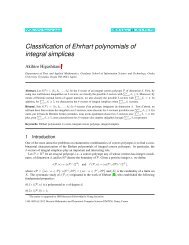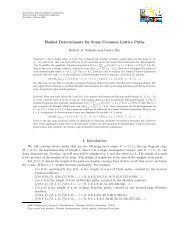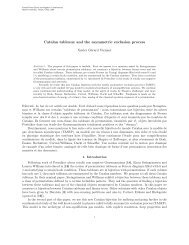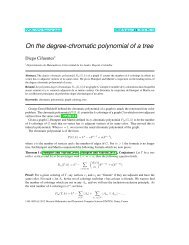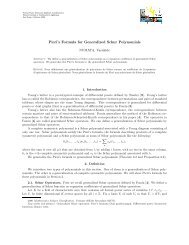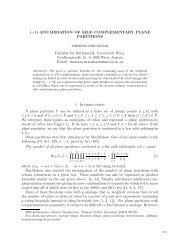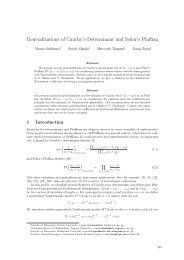Euler's partition theorem and the combinatorics of -sequences
Euler's partition theorem and the combinatorics of -sequences
Euler's partition theorem and the combinatorics of -sequences
You also want an ePaper? Increase the reach of your titles
YUMPU automatically turns print PDFs into web optimized ePapers that Google loves.
Let u l <strong>and</strong> v l be <strong>the</strong> roots <strong>of</strong> <strong>the</strong> polynomial x 2 − lx + 1:<br />
Then<br />
u l = l + √ l 2 − 4<br />
; v l = l − √ l 2 − 4<br />
2<br />
2<br />
u l + v l = l; u l v l = 1.<br />
a (l)<br />
n = un l − v n l<br />
u l − v l<br />
.<br />
For real r, define<br />
∆ (l)<br />
r<br />
= ul r + v l r . Then for integer n<br />
∆ (l)<br />
n<br />
= a (l)<br />
n+1 − a(l) n−1 . (∆ is <strong>the</strong> l analog <strong>of</strong> “2”.)



